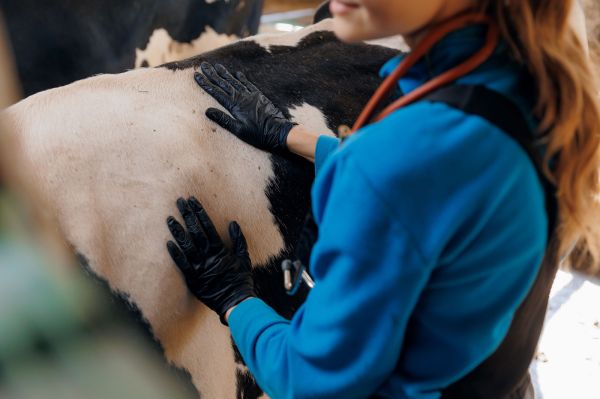Timescale for IBR eradication

The highly infectious nature of the IBR virus, which affects the respiratory system of animals, makes it particularly difficult to control let alone, ultimately, eradicate. Because of this, the timescale for eradication is prolonged, with an estimate from Dr Guelbenzu that it could take 16 years to complete such a programme. Given the extended time lag in an ongoing programme by AHI to rid livestock in this country of bovine viral diarrhoea (BVD), that 16-year period may even be somewhat optimistic. Time, as they say, will tell.
Lifelong disease
The health impacts of IBR are considerable, though most animals do recover to a greater or lesser extent, from the disease. Unfortunately, they go on to be lifelong carriers. The disease becomes latent in the animals unless, or until, they come under some health or environmental stress and they can shed the virus at that stage, again infecting other animals in the herd, or neighbouring herds where transmission distances are close enough. The disease is present at similar levels in both suckler and dairy herds in the country. A rough estimate is that the virus is transmissible, in favourable environmental circumstances, to other animals within five metres, so not only is there a close-proximity transmission route, but there are also air and windblown transmission properties to consider. Younger animals are particularly susceptible to serious outcomes from IBR infection, including death or long-term compromised health.
In milking cows, an IBR infection results in milk loss, while abortion is also a potential outcome in some cases. Presuming the animal does recover from the infection, a return to normal health takes up to three weeks.
Widespread infection
At this initial stage of a campaign of eradication, it should be noted that IBR is almost ubiquitous in the national herd with three-quarters of herds having animals that have been exposed to the virus and are, therefore, carriers of the infectious disease, though not necessarily active transmitters to fellow animals in the herd.
An IBR eradication programme, apart from the health benefits for animals, is hugely important to secure cattle and semen/embryo exports into the future as more countries adopt a policy of only accepting animals from IBR-free countries. The impacts are threefold, including: health and welfare; economic impact; and livestock-trade implications, as Dr Guelbenzu explained. Our live-export trade of calves is particularly important and any IBR-induced restrictions to that trade would be serious, especially given the ongoing pressures already being experienced in that trade, where close to 200,000 calves are exported annually. Add in weanling and store-cattle exports and the necessity of curtailing and ultimately eliminating IBR infection in our livestock becomes even more critical. As a side observation, the increasing restrictions on antibiotic usage will impact our ability to treat the secondary health effects of IBR infection in the future.
IBR-free status
Several countries in the European Union have achieved IBR-free status, Dr Guelbenzu confirmed. These include Norway, Sweden and Denmark, as well as Germany, Austria and the Czech Republic. Switzerland is also free of IBR in its livestock herd. Add in Belgium and France, where IBR-eradication programmes are progressing rapidly, and it becomes clear that any lagging behind by Ireland is not an optimal approach. Our main calf-export markets of the Netherlands and Spain are due to implement eradication programmes, with consequent restrictions on imports of animals from countries with high IBR infection rates in its herds, such as Ireland.
Three-phase approach
An IBR-eradication programme will be multi-pronged, including widespread vaccination over many years, as well as high biosecurity measures for non-infected herds, though those herds remain permanently under risk of infection from external sources, either from bought-in stock, infection from contiguous IBR-infected herds or even through transmission from livestock transport vehicles or manual transmission from those people working with the animals and carrying in the virus from an external source.
The practicalities of an IBR-eradication programme include three phases, starting with an initial reduction period, a full-scale eradication phase and, finally, a monitoring phase to ensure complete and permanent eradication has been achieved. Vaccination will form a central aspect of the control and, hopefully, eventual eradication of the disease from Irish cattle herds.



